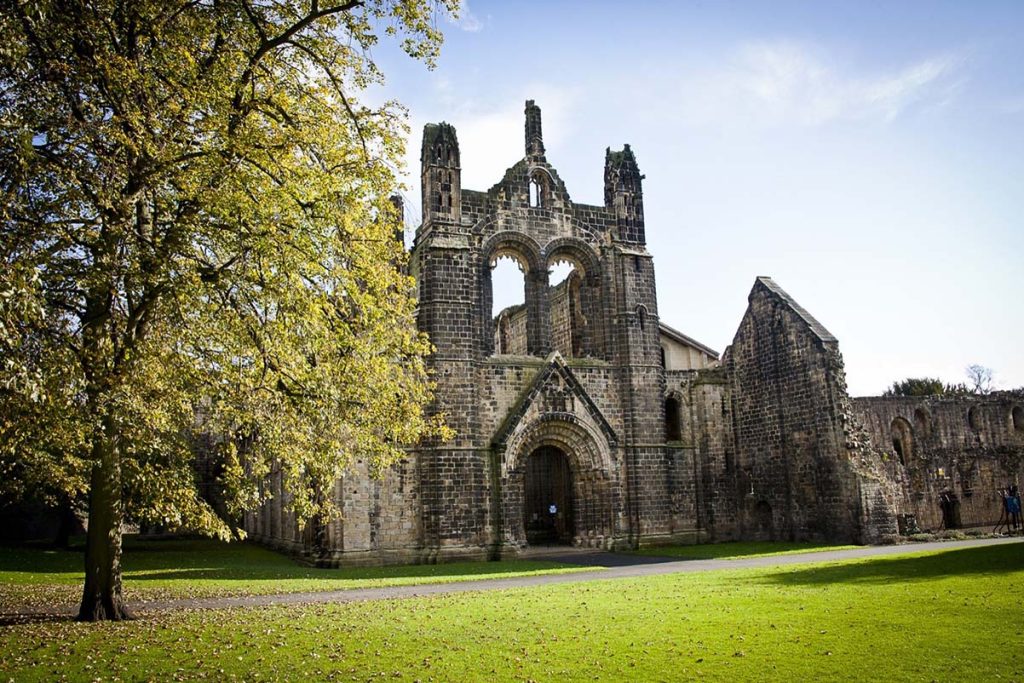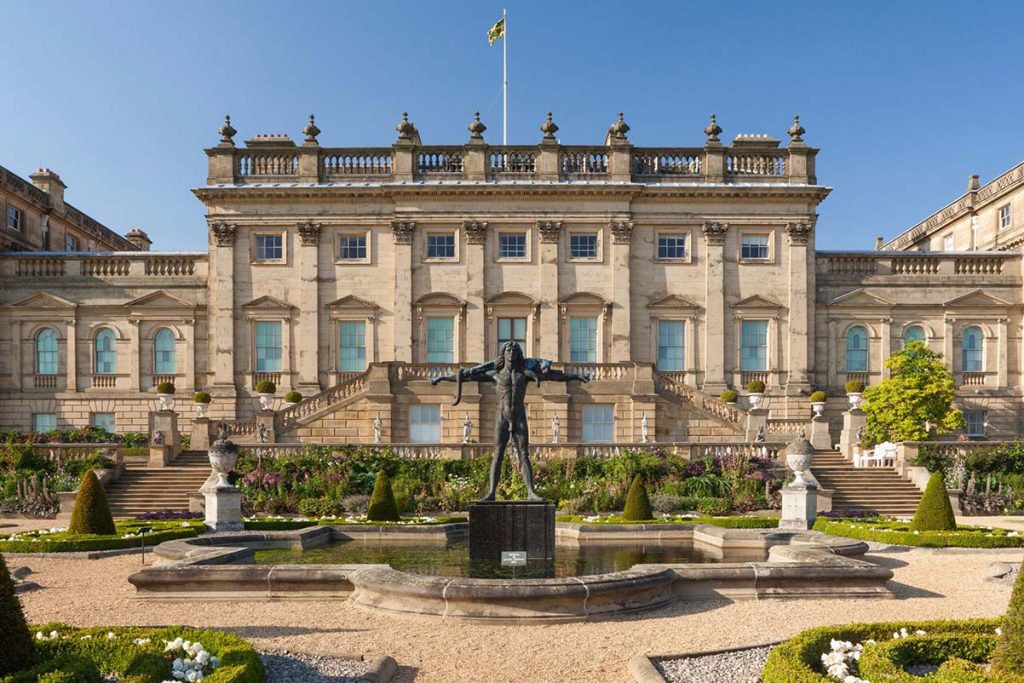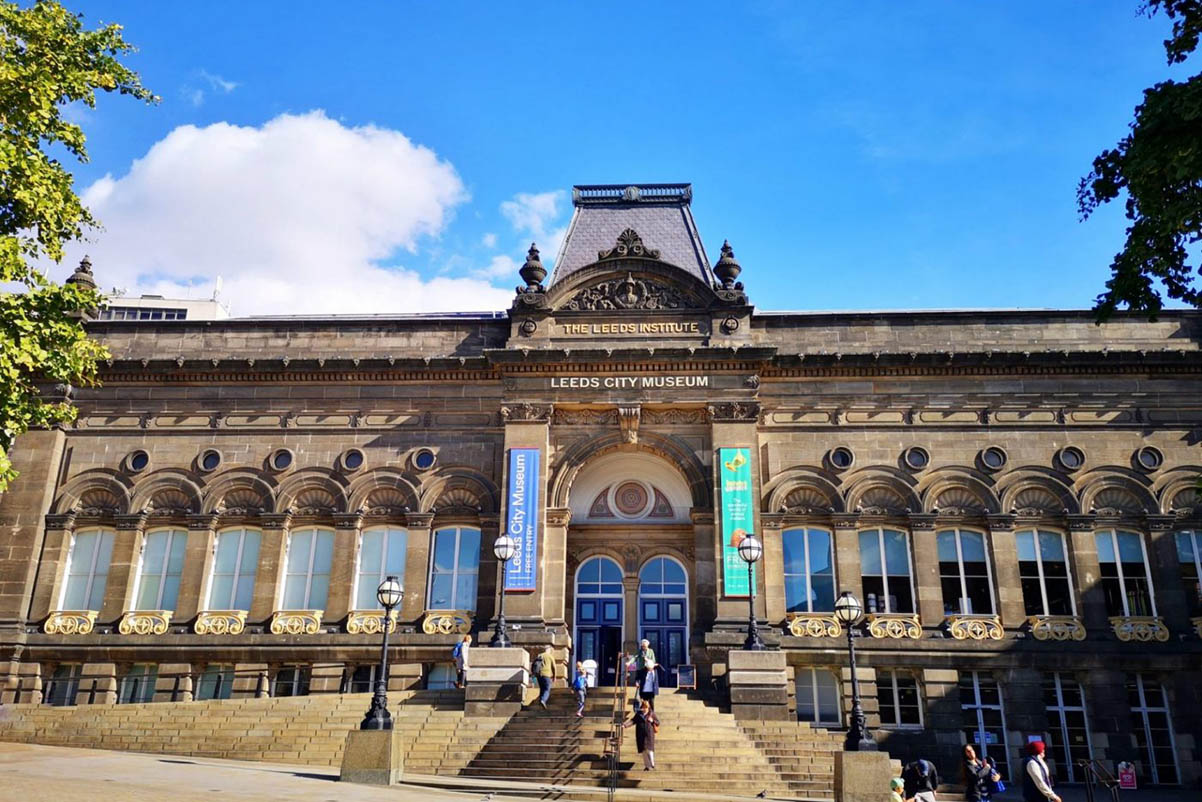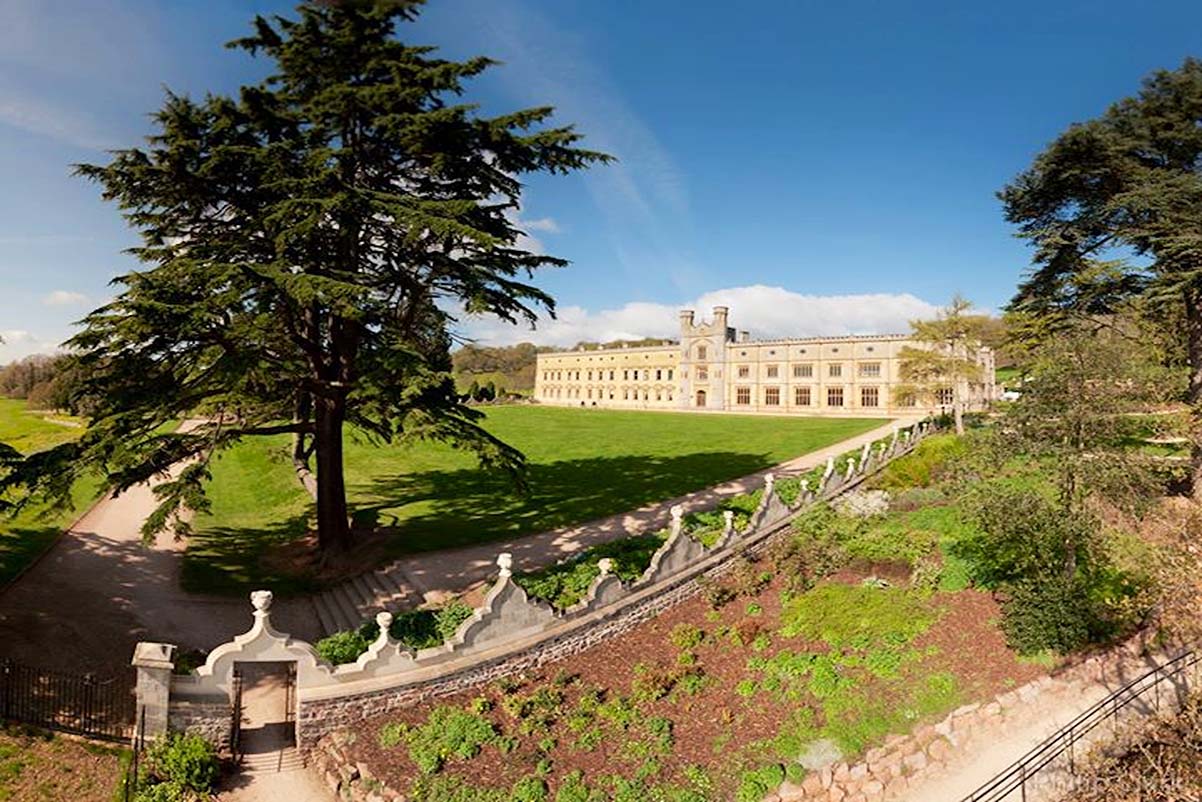Leeds, a vibrant city in the heart of Yorkshire, England, offers a blend of historical charm, cultural richness, and modern sophistication. As a travel blogger passionate about exploring new destinations, I found Leeds to be a treasure trove of experiences waiting to be uncovered. Join me as I take you through the top 6 must-visit attractions in this dynamic city, each offering a unique glimpse into its past and present.
1.Leeds City Museum: Unveiling the City’s History
My journey begins at the Leeds City Museum, a captivating institution nestled in the heart of the city’s cultural district. Housed within a magnificent Victorian building, the museum itself is a testament to Leeds’ rich architectural heritage, with its ornate facades and grandeur that evoke a sense of stepping back in time.
Upon entering, I’m immediately drawn to the museum’s diverse exhibits that chronicle the history and evolution of Leeds. From the moment I step through the imposing entrance, I’m greeted by a wealth of artifacts that span centuries, each telling a unique story about the city’s past.
The museum’s collection is thoughtfully curated, offering a comprehensive journey through Leeds’ industrial, social, and cultural history. As I explore the various galleries, I encounter ancient relics that date back to Roman times, showcasing Leeds’ origins as a settlement known for its strategic location and trading routes.
One of the highlights of my visit is the section dedicated to Leeds’ industrial heritage. Here, interactive displays bring to life the city’s transformation during the Industrial Revolution. Models of factories and workshops depict the bustling activity that once defined Leeds as a hub of manufacturing and innovation.
A particular gem within the museum’s collection is Thwaite Mills, a fully restored water-powered mill located just a short distance from the city center. Stepping into Thwaite Mills feels like entering a time capsule, where the rhythmic sounds of machinery and the scent of timber transport me to an era when mills powered the city’s economy. The meticulously preserved mill machinery and informative exhibits offer a fascinating glimpse into Leeds’ industrial prowess and the lives of mill workers who shaped its history.
Throughout my visit, I’m struck not only by the museum’s dedication to preserving Leeds’ heritage but also by its commitment to engaging visitors of all ages. Interactive installations invite hands-on exploration, allowing me to try my hand at tasks that were once integral to daily life in Leeds, from weaving cloth to operating early machinery.
2. Royal Armouries Museum: A Tribute to Military History
Next on my list of must-visit attractions in Leeds is the Royal Armouries Museum, a spectacular homage to military history that beckons history enthusiasts and families alike. Situated against the backdrop of Clarence Dock, this museum stands as a beacon of Leeds’ commitment to preserving and showcasing the evolution of arms and armor throughout the ages.
As I approach the museum’s impressive facade, I’m struck by its imposing architecture, which blends seamlessly with the surrounding waterfront landscape. The location itself adds to the allure, offering panoramic views of the docks and the bustling activity that once fueled Leeds’ maritime trade.
Stepping inside, I find myself immersed in a world where centuries of military prowess and craftsmanship unfold before my eyes. The Royal Armouries Museum boasts one of the world’s largest collections of arms and armor, spanning from medieval times to the modern era. Each exhibit is meticulously curated to provide a comprehensive narrative of warfare, highlighting technological advancements, strategic innovations, and the human stories behind each piece.
One of the museum’s standout features is its collection of medieval suits of armor, which stand as silent sentinels to an era of chivalry and battlefield valor. The craftsmanship evident in these pieces is awe-inspiring, from intricate engravings to functional design that once protected knights in the heat of battle.
Moving through the galleries, I encounter displays showcasing weapons from different cultures and periods, each offering insights into the evolution of military tactics and technology. From finely crafted swords and shields to powerful firearms and artillery, the exhibits showcase the ingenuity and ingenuity of those who wielded them.
What truly brings the museum to life are the live demonstrations and interactive displays scattered throughout its halls. Here, visitors can witness skilled craftsmen recreate historical techniques in metalworking and armor production, offering a glimpse into the labor-intensive processes that defined warfare centuries ago.
For families, the Royal Armouries Museum offers a wealth of educational opportunities. Children can participate in hands-on activities, try on replica armor, and even engage in mock battles that bring history vividly to life. It’s a place where learning is immersive and engaging, making it a favorite among young and old alike.
3.Kirkstall Abbey: A Serene Retreat
Stepping back in time, Kirkstall Abbey stands as a serene retreat mere moments from Leeds city center, offering visitors a tranquil escape into history. Nestled along the banks of the River Aire, this 12th-century Cistercian monastery is a testament to medieval architecture and the enduring spirit of spiritual devotion.
Approaching the abbey grounds, I am immediately captivated by its majestic ruins, where towering stone walls and graceful archways evoke a sense of ancient grandeur. The abbey’s Gothic architecture, with its pointed arches and intricate carvings, whispers tales of monks who once walked these hallowed grounds, their lives dedicated to prayer, study, and labor.
As I wander through the abbey ruins, I am enveloped in a sense of peace and contemplation. The expansive grounds invite me to explore at my leisure, with paths winding through well-tended gardens and open lawns where visitors can spread out a picnic blanket and savor the tranquility of the surroundings. The gentle murmur of the River Aire adds a soothing soundtrack to my stroll, its waters reflecting the abbey’s weathered stone facades and lush greenery.
One of the most striking features of Kirkstall Abbey is its impressive nave, where the soaring remnants of once-vaulted ceilings stretch skyward, creating a dramatic canopy over the open-air space. Here, history comes alive as I imagine the abbey’s former glory, bustling with the rhythms of daily life and spiritual devotion.
Exploring further, I discover the chapter house, a place of solemn gatherings and decision-making for the Cistercian monks. Its octagonal shape and slender columns speak to the architectural elegance and functional simplicity that defined medieval monastic life.
For history enthusiasts, Kirkstall Abbey offers more than just scenic beauty. Interpretive panels throughout the site provide insights into the abbey’s history, from its founding in the 12th century to its dissolution during the Dissolution of the Monasteries in the 16th century. These panels illuminate the abbey’s role as a center of religious life, education, and community service, offering a glimpse into a bygone era that shaped the cultural landscape of Yorkshire.

4.Leeds Corn Exchange: Architectural Gem and Shopping Haven
Nestled in the heart of Leeds, the Leeds Corn Exchange beckons both architecture enthusiasts and discerning shoppers alike with its unparalleled blend of historical grandeur and contemporary charm. Dating back to the mid-19th century and proudly listed as a Grade I heritage building, this architectural gem stands as a testament to Leeds’ rich industrial history and enduring cultural vibrancy.
Approaching the Leeds Corn Exchange, I am immediately struck by its imposing facade and the intricacy of its Victorian design. The building’s distinctive domed roof, crowned with a lantern and surrounded by elegant ironwork, commands attention amidst the modern cityscape. It’s a true masterpiece of its time, blending classical elements with innovative engineering that once housed the bustling trade of agricultural goods.
Stepping inside, I find myself immersed in a world where history meets contemporary flair. The interior of the Corn Exchange has been lovingly restored to preserve its original charm while accommodating a vibrant array of independent boutiques, artisan shops, and creative studios. Each storefront exudes its own unique character, offering everything from bespoke fashion pieces and handcrafted jewelry to locally sourced artwork and gourmet delicacies.
Wandering through the corridors of the Corn Exchange, I encounter a treasure trove of creativity and craftsmanship. Fashionistas will delight in discovering couture designs that can’t be found elsewhere, while art aficionados will appreciate the opportunity to support local artists through their purchases of paintings, ceramics, and sculptures.
What sets the Leeds Corn Exchange apart is its commitment to fostering a community of artisans and entrepreneurs. Many of the shops here are run by passionate individuals who are eager to share the stories behind their products and the inspirations that drive their creativity. It’s not just a shopping destination but a cultural hub where visitors can engage directly with the city’s thriving creative community.
Beyond shopping, the Leeds Corn Exchange hosts regular events, pop-up markets, and exhibitions that further showcase the city’s artistic diversity. From live music performances to interactive workshops, there’s always something new to discover and experience within these historic walls.
5. Roundhay Park: Nature’s Playground
Roundhay Park stands as a verdant sanctuary and a quintessential attraction for nature enthusiasts in Leeds. Spanning an expansive 700 acres, it holds the distinction of being one of Europe’s largest urban parks, offering a picturesque retreat that seamlessly blends natural beauty with recreational opportunities.
As I enter Roundhay Park, I am greeted by vast open spaces dotted with manicured gardens, tranquil woodlands, and shimmering lakes that reflect the changing skies above. The park’s sprawling landscape invites exploration, whether by leisurely stroll along its winding paths or by more adventurous hikes through its wooded trails.
One of the park’s most captivating features is Tropical World, a haven of biodiversity nestled within its lush surroundings. This greenhouse complex houses a stunning array of exotic plants, vibrant butterflies, and curious creatures like meerkats that captivate visitors of all ages. Stepping into Tropical World feels like stepping into a different world altogether, where the air is rich with the scents of tropical blooms and the vibrant colors of flora and fauna paint a vivid tapestry of biodiversity.
Beyond its botanical wonders, Roundhay Park offers a wealth of recreational activities for visitors to enjoy. Families can unwind with picnics on the grassy lawns, while active enthusiasts can partake in boating on the lake or engage in sports at the park’s various courts and fields. During warmer months, the park comes alive with festivals, concerts, and outdoor events that draw crowds from across Leeds and beyond.
For those seeking moments of tranquility, Roundhay Park delivers with its secluded corners and peaceful alcoves, where benches overlook scenic vistas or provide quiet retreats for reflection. The park’s historic structures, such as the picturesque Lakeside Cafe and the ornate Mansion House, add to its allure, offering glimpses into Leeds’ architectural heritage amidst the natural splendor.
As I spend hours immersed in Roundhay Park’s serene landscapes and diverse ecosystems, I am reminded of its role not just as a recreational space but as a cultural and ecological cornerstone of Leeds. Its commitment to conservation and community engagement shines through in its educational programs and sustainability initiatives, ensuring that future generations can continue to enjoy its natural wonders.
6.Harewood House: Grandeur and Elegance
A short drive from Leeds transports me to the splendid estate of Harewood House, a true gem of Yorkshire’s architectural and cultural heritage. Situated amidst meticulously landscaped grounds envisioned by the renowned Capability Brown, Harewood House emerges as a masterpiece of 18th-century elegance and grandeur.
Approaching Harewood House, I am immediately struck by its imposing façade, a testament to the opulence and refinement of its era. The Palladian-style architecture, characterized by symmetrical lines and classical proportions, exudes a sense of timeless grace. As I step through its grand entrance, I am enveloped in an atmosphere of aristocratic splendor, where every room tells a story of wealth, artistry, and historical significance.
A guided tour of Harewood House unveils its treasures, from lavish drawing rooms adorned with priceless art collections to the intimate chambers once inhabited by generations of the Lascelles family. The opulent interiors showcase masterpieces by renowned artists, elegant period furniture, and intricate tapestries that reflect the tastes and aspirations of England’s aristocracy.
Beyond its sumptuous interiors, Harewood House invites exploration of its extensive grounds, meticulously designed by Capability Brown to harmonize with the surrounding natural landscape. Strolling through the expansive gardens, I am treated to sweeping vistas, tranquil lakes, and cascading water features that evoke a sense of serenity and natural beauty.
One of the highlights of the estate is the Bird Garden, a sanctuary for exotic and native bird species nestled within the verdant parkland. Here, I observe vibrant peacocks, majestic birds of prey, and colorful parrots amidst carefully curated habitats that prioritize conservation and education.
Throughout the year, Harewood House hosts a variety of seasonal events and cultural exhibitions that celebrate its rich heritage and engage visitors of all ages. From outdoor concerts and theatrical performances to themed festivals and art installations, each event offers a unique opportunity to experience the estate’s charm in new and exciting ways.

Discovering Leeds’ Hidden Gems
Leeds has exceeded my expectations . Its blend of history, culture, and contemporary allure makes it a destination worth exploring. Whether you’re captivated by medieval ruins, intrigued by industrial heritage, or enticed by culinary delights, Leeds offers something for everyone. I hope this guide inspires you to discover the magic of Leeds and create unforgettable memories in this vibrant city.
Exploring Leeds has been a journey of discovery, from ancient ruins to modern marvels, each attraction adding a layer to the city’s rich tapestry. Whether you’re planning a weekend getaway or a longer stay, Leeds promises to enchant and delight with its diverse attractions and warm Yorkshire hospitality.



